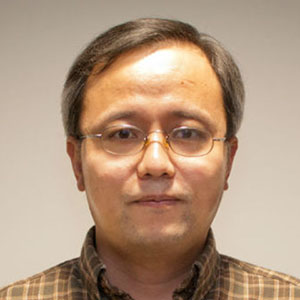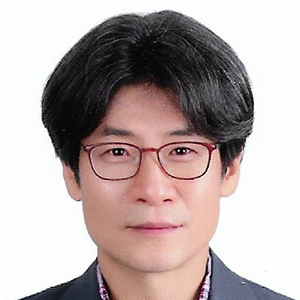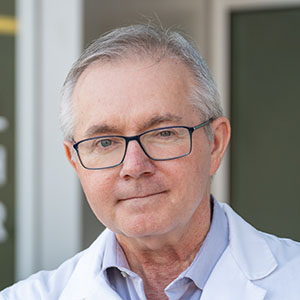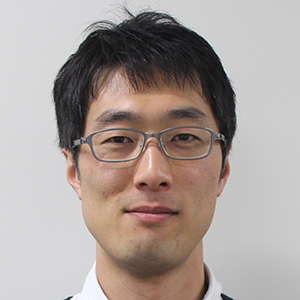Invited Speakers
The G4thering 2025 conference is pleased to introduce the Invited Speakers for the following themes:
Biology & Disease

Marco Di Antonio
Imperial College of London, UK
Individual G-quadruplex targeting with chemically functionalised CRISPR-Cas9 uncovers transcriptional and ligand-specific responses
The development of selective ligands to target DNA G-quadruplexes (G4s) has been pivotal in supporting their role in transcriptional regulation.1 However, most of the ligands described to date lack intra-G4 selectivity, severely limiting their potential for uncovering the biological function of individual G4s across the genome. In this talk, I will present ATENA (Approach to Target Exact Nucleic Acid alternative structures) a new method we developed to provide G4-ligand with intra-G4 selectivity. ATENA relies on the chemical modification of established G4-ligands that can be conjugated to a catalytically inactive Cas9 protein (dCas9) using Halo-Tag, enabling the targeting of individual G4s in living cells. We have systematically screened the length of the PEG-linkers connecting the G4-ligands to the Halo-Tag and sgRNA sequences to attain optimal G4-engagement both in vitro and in cells. Using optimised conditions, we leveraged ATENA to demonstrate how selective targeting of the established G4 in the proto-oncogene c-MYC suppresses its transcription exclusively from the P1 promoter. We also show that positioning ligands in the proximity of TATA-boxes suppresses c-MYC transcription in a G4-independent manner, highlighting the importance of appropriate design to measure real G4-mediated transcriptional changes. We also demonstrate that selective targeting of the PVT-1 G4 by conjugation of dCas9 to different G4-ligands, PDS or PhenDC3, leads to either stimulation or repression of PVT-1 transcription, indicating that the biological responses elicited by G4-stabilization can be highly dependent on the type of ligand used. We further leveraged our platform to study the biological responses caused by targeting de novo G4s. Our study provides key insights into G4-based therapeutic design, offering an innovative platform to investigate G4 biology from a fresh perspective.

Robert Hansel-Hertsch
University of Cologne, Germany
G-quadruplex DNA in trained immunity and aging
G-quadruplex (G4) DNA structures are dynamic epigenetic phenomena that form in nucleosome-depleted regions (NDRs) (e.g., promoters, enhancers).Active enhancers are marked by H3K27ac, crucial for gene regulation. Innate immune memory (trained immunity) is another epigenetic event in which immune cells (e.g., macrophages) recognize and “memorize” exogenous signals in their chromatin, leading to enhanced immune responsiveness in the future. We hypothesize that G4s, which predominate in NDRs and exclude nucleosomes, support long-lasting transcription of immune genes critical for trained immunity. Indeed, we observe persistent H3K27ac near G4-forming sites in monocyte-derived macrophages from human individuals who received ≥2 SARS-CoV-2 mRNA vaccinations, suggesting that G4 structures enhance immune memory.G4s can promote DNA double-strand breaks (DSBs) when exogenously stabilized by small molecules targeting G4s and are thought to cause mutations when not properly maintained by helicases. Previously, we used G4-mapping to reveal their increased formation in various cancer models, suggesting that their presence in regulatory and unstable regions may contribute to cancer development. I will present our efforts to quantify G4 levels in human and murine aging models and how the loss of sirtuin function may explain increased G4 levels, persistent DSBs, and senescence in aged human and murine cells as well as in aged tissues.

Pavel Ivanov
Harvard University, USA
Structural and functional diversity of tetramolecular RNA G-quadruplexes derived from endogenous tRNA variants
Transfer RNAs (tRNAs) are the key adaptor molecules essential for protein synthesis. Besides their canonical functions in mRNA translation, tRNAs are implicated in non-canonical functions unrelated to protein synthesis. tRNAs are rich source of small non-protein coding RNAs called tRNA-derived RNAs (tDRs), which include tRNA-derived stress-induced RNAs (tiRNAs) formed in response to cellular stress. Growing evidence suggests that several tDRs engage in translation regulation, with a subset of tiRNAs acting as translation silencers. Specifically, 5′-terminal oligopyrimidine (TOG) motif containing tiRNAs such as 5’tiRNAAla and 5’tiRNACys can form unique tetramolecular G-quadruplex structures (G4-tiRNAs). These G4-tiRNAs inhibit canonical (cap-dependent) translation initiation but do not target non-canonical Internal Ribosome Entry Site (IRES)-driven translation initiation. Furthermore, G4-tiRNAs also promote the assembly of Stress Granules (SGs), RNA-protein condensates with stress-adaptive pro-survival functions.
Here, we expanded our analysis of G4-tiRNAs to incorporate the tiRNAs derived from tRNA isodecoders. Our findings suggest that, within a tRNA isodecoder pool, even a single nucleotide variation in TOG motif neighborhood results in the variability in the G4 structures. Importantly, such structural variation drives significant diversity in the biological functions of G4-tiRNAs.

Brett Kaufman
University of Pittsburgh, USA
G-quadruplexes in Mitochondria
The stability and normal expression of mtDNA are essential for cellular respiration and tissue viability. Secondary structures are present in mtDNA, but we have an incomplete understanding of how they impact mitochondrial replication, gene expression, and genome integrity. We and others have associated G-quadruplex structures (G4s), which form among guanine-rich sequences, with mtDNA deletion breakpoints. Our exciting preliminary data shows that mitochondrial-localized G4 binding agents (mtG4BAs) negatively influence mitochondrial replication, transcription, and respiration through G4 stabilization and have a biased interaction with mtDNA sequence variants that affect G4 stability. Despite this, mitochondrial G4 are evolutionarily conserved, suggesting that G4s have a beneficial role in mitochondrial function at physiological levels. These data lead us to the overarching hypothesis that physiological G4 formation within mtDNA regulates mitochondrial transcription and replication. The mtDNA is rich in predicted G4-forming sequences, but it is unclear which mitochondrial sequences usually form G4 in cells, how these structures affect mitochondrial biology, and which specific enzymes regulate G4 formation and removal. We will describe what we currently know about mtG4 formation, biological impact, and tools being generated for their study. The hope is that mtG4 can be leveraged with targeting molecules to treat mitochondrial defects in genetic and idiopathic diseases.

Nayun Kim
The University of Texas at Austin, USA
G4 DNA and Zn Finger transcription factors
DNA secondary structure and topology are in dynamic flux. Important question is what is the functional significance of non-canonical DNA structures. Sequences containing runs of guanines and capable of forming stable G4 DNA are highly enriched at gene promoters suggesting their potential role in regulating transcription. Recently, human Zn-finger transcription factors such as Sp1 and YY1 were shown to be G4 DNA-binding proteins. Our preliminary experiments led to the novel discovery that yeast transcription factor Msn2 binds to G4 DNA in vivo and in vitro. And G4 DNA forming sequences (PQS) are present at many of Msn2-target gene promoters. Transcription at these genes are up-regulated by G4 ligands. Here, we describe the kinetics and specificities of Msn2 interaction with G4 DNA and the effect of Msn2-G4 interaction in the regulation of transcription. We identified additional Zn-Finger transcription factors in both yeast and human that bind to G4 DNA with high affinity in support of a novel mode of transactivation in which G4 DNA becomes a docking site for multiple TFs including Msn2 to establish a hub of transactivation.

Kateryna D Makova
Penn State University, USA
Non-canonical DNA in human and other ape telomere-to-telomere genomes: Computational predictions, experimental validations, and evolution
Non-canonical DNA structures regulate key cellular processes and serve as mutational hotspots, yet their precise detection and evolution have remained elusive due to incomplete genome sequences. Here, we analyze non-B DNA in the recently deciphered telomere-to-telomere (T2T) genomes of humans and great apes. First, we computationally predict motifs capable of forming non-B DNA. These motifs are enriched at the genomic regions added to T2T assemblies, including repetitive sequences, short arms of acrocentric chromosomes (where they may influence satellite dynamics), and centromeres (where they may contribute to centromere function). Second, we experimentally validate non-B DNA structure formation using Permanganate/S1 footprinting with Direct Adapter Ligation and sequencing (PDAL-seq). We show that clusters of different non-B DNA motifs–particularly direct repeats, G-quadruplexes (G4s), and Z-DNA–drive single-stranded DNA formation. PDAL-seq signal is enriched at promoters, enhancers, and 5’ UTRs, supporting a regulatory role for non-B DNA. Third, we investigate the evolution of G4s, identifying thousands of conserved and species-specific pG4s. The conserved pG4s are hypomethylated and linked to regulatory regions, while species-specific pG4s may contribute to adaptation and genome expansion. Thus, non-B DNA is unevenly distributed across ape genomes and might have novel functions in previously inaccessible genomic regions.

Katrin Paeschke
University Hospital Bonn, Germany
Viral hijacking of hnRNPH1 unveils a G-quadruplex driven mechanism of stress control
A common feature of most viruses is their dependence on regulatory RNA elements. Recent research suggested that non-canonical structures called G-quadruplexes (G4s) are overrepresented in viral genomes and have emerged as promising anti-viral targets. Using yellow fever virus (YFV) as a model system, we characterized the formation and the biological consequences of a conserved G4 within the genomes of the Flaviviridae family. We determined that this G4 is essential to promote viral replication and suppress the host cell stress response pathway. In subsequent mechanistic analyses, we pinpoint that this unique G4 function is associated with the nuclear host protein hnRNPH1. Specifically, G4 interaction leads to the retention of hnRNPH1 in the cytoplasm, causing an impaired stress response and alleviation of the anti-viral effects of stress-induced G4-forming tRNA fragments (tiRNAs). In conclusion, our data reveal a unique interplay of hnRNPH1 with host and viral G4 targets, controlling the integrated stress response and viral infection.

Sua Myong
Harvard University, USA
Opposing roles of two R-loop associated G-quadruplexes in tuning transcription activity
Guanine (G)-rich sequences in nucleic acids can form noncanonical secondary structures such as R-loop and G-quadruplex (G4) during transcription. The R-loop formed on the template strand promotes and stabilizes G4 in the non-template strand. However, the precise role of G4/R-loop-forming sequences on transcription remains poorly understood. In this study, we investigated the effect of different potential G4-forming sequences (PQS) on G4/R-loop formation and transcription dynamics. We employed gel-based assays and single-molecule fluorescence resonance energy transfer (FRET) to measure RNA synthesis and concomitant formation of G4 and R-loop during transcription by T7 RNA polymerase. We reveal two types of R-loop that form successively; an R-loop with an intramolecular DNA G4 (IG4) initially forms during transcription, followed by an R-loop with an intermolecular DNA: RNA hybrid G4 (HG4). We found that IG4 R-loops inhibit whereas HG4 R-loops enhance transcription. We identified that an HG4/IG4 ratio highly correlates with transcriptional activity. PQS with short linkers favors IG4, reducing transcription, while PQS with long linkers that induce loosely folding PQS favor HG4, increasing transcription. Since IG4 formation precedes HG4, tightly folded PQS forms IG4 quickly and stably, slowing its conversion to HG4 and reducing transcriptional enhancement.

Norifumi Shioda
Kumamoto University, Japan
“G4 Prionoid” RNA G-quadruplexes in neuropathology
Synucleinopathies, including Parkinson’s disease, are triggered by alpha-synuclein aggregation, triggering progressive neurodegeneration. We demonstrated that RNA G-quadruplex assembly forms scaffolds for alpha-synuclein aggregation, contributing to neurodegeneration. Purified alpha-synuclein binds RNA G-quadruplexes directly through the N terminus. RNA G-quadruplexes undergo Ca2+-induced phase separation and assembly, accelerating α-synuclein sol-gel phase transition. In alpha-synuclein preformed fibril-treated neurons, RNA G-quadruplex assembly comprising synaptic mRNAs co-aggregates with alpha-synuclein upon excess cytoplasmic Ca2+ influx, eliciting synaptic dysfunction. Forced RNA G-quadruplex assembly using an optogenetic approach evokes α-synuclein aggregation, causing neuronal dysfunction and neurodegeneration. The administration of 5-aminolevulinic acid, a protoporphyrin IX prodrug, prevents RNA G-quadruplex phase separation, thereby attenuating α-synuclein aggregation in alpha-synuclein preformed fibril-injected synucleinopathic mice (Cell. 2024). In this symposium, I will also present the relevance of RNA G-quadruplex to other neurodegenerative diseases.

Guangchao Sui
Northeast Forest University, China
G-quadruplexes promote molecular motility in MAZ phase-separated condensates to activate CCND1 expression
G-quadruplexes (G4s) can recruit transcription factors to activate gene expression, but detailed mechanisms are not well characterized. We demonstrate that G4s in the CCND1 promoter promote the molecular motility in MAZ phase-separated condensates and subsequently activate CCND1 transcription. Zinc finger (ZF) 2 of MAZ is responsible for G4 binding, while ZF3-5, but not a highly disordered region, is critical for MAZ condensation. MAZ nuclear puncta overlaps with signals of G4s and various coactivators including BRD4, MED1, CDK9 and active RNA polymerase II, as well as gene activation histone markers. MAZ mutants lacking either G4 binding or phase separation ability did not form nuclear puncta, and showed deficiencies in promoting hepatocellular carcinoma cell proliferation and xenograft tumor formation. Overall, we unveiled a novel mechanism that G4s recruit MAZ to the CCND1 promoter and facilitate the motility in MAZ condensates that compartmentalize coactivators to activate CCND1 expression and subsequently exacerbate hepatocarcinogenesis.

Yinsheng Wang
University of California, USA
Chemistry and biology of G quadruplex-binding proteins
Recent studies documented the widespread presence of guanine quadruplex (G4) in the human genome and transcriptome. Identifying cellular proteins involved in the recognition of G4 structures is important for understanding the biological functions of G4. In this presentation, I will discuss our recent experimental and bioinformatic approaches toward identifying novel DNA and RNA G4-binding proteins in vitro and in live cells. Affinity pull-down, photo-crosslinking and proximity labeling, followed by quantitative proteomic analysis, allowed us to identify a large number of candidate DNA and RNA G4-binding proteins. Bioinformatic analysis of publicly available ChIP-seq and CLIP-seq data also resulted in the identification of candidate G4-binding proteins. We also validated the abilities of some of these proteins in binding directly and selectively with G4 DNA and RNA. Moreover, we illustrated the functions of these newly identified G4-binding proteins in modulating various important biological processes, including long-range DNA looping, mRNA splicing, alternative polyadenylation, and telomere maintenance. Together, our integrative chemical biology approach provided a better understanding about the biological functions of DNA and RNA G4.

Mike Wendt
University of Iowa, USA
Targeting G-quadraplex to eliminate dormant breast cancer
Despite recent therapeutic advances, metastatic breast cancer (MBC) remains an incurable disease with only 32% of patients surviving 5-years beyond diagnosis. An unmet need that contributes to the eventual progression of MBC is the lack of therapeutic strategies capable of eradicating disseminated dormant disease. Several recent studies from our group and others suggest that cellular plasticity is critical to drug persistence and tumor re-initiating capacity of MBC. The concept of phenotypic plasticity leading to cellular heterogeneity of metastatic tumors largely occurs at the epigenetic level and likely contributes to the inability of highly-specific targeted therapies to produce complete responses in MBC patients. Our lab has demonstrated that fibroblast growth factor receptor 1 (FGFR1) is upregulated in metastases and that this signaling axis plays critical roles in metastatic tumor growth. Targeted inhibition of FGFR kinase activity with FDA approved small molecules can regress active metastases, but the remaining dormant disease upregulates PDGFR to facilitate cell survival. We have demonstrated that the proximal promoter of FGFR1 contains G-quadraplex (G4) and pharmacologic stabilization of these structures limits expression of FGFR1 and PDGFR. In contrast to specific enzymatic targeting of FGFR1, G4-mediated normalization of its expression is capable of eliminating dormant disease. Ongoing studies are focused on understanding the complete epigenetic reprograming that takes place upon G4 stabilization reducing survival of dormant disease.
Nanotech & Biotech

Hanbin Mao
Kent State University, USA
Understanding the role of tandem G-quadruplex structures in the liquid-liquid phase separation (LLPS)
Liquid-liquid phase separation (LLPS) occurred inside cells has attributed to modulating a multitude of cellular functions. These LLPS condensates are often formed between positively charged peptides and negatively charged nucleic acids. In our research, we have investigated the LLPS condensation between peptides and single-molecule nucleic acid templates anchored between two optically trapped beads in a laser tweezers instrument. By monitoring the mechanical tension of the nucleic acid templates upon addition of positively charged poly-l-lysine (PLL), we revealed a multistage LLPS process mediated by the long-range interactions between nucleic acids and polyelectrolytes. We found that compared to random nucleic acid sequences, single-stranded DNA templates containing tandem G-quadruplex units are most difficult to form LLPS condensates. This is likely because poly-G-quadruplex has the propensity to form rigid nucleic acid-PLL complexes, reducing the condensate formation during the LLPS process. In addition, we also discovered that LLPS processes follow matched chirality between poly-lysine and G-quadruplex. Poly-l-lysine and poly-d-lysine are easier to form condensates with left- and right-handed G-quadruplexes, respectively. We anticipate that these results can provide new strategies to interfere with biological functions of LLPS condensates involving nucleic acids with secondary structures, such as tandem G-quadruplex, which occurs frequently inside cells.

Thomas Marsh
St. Thomas University, USA
Use of G4 for the Construction of Supramolecular Scaffold Materials
Guanosine and Guanine-rich nucleic acids have the well-known property of self-assembling into supramolecular materials in a variety of conditions. We have investigated the potential for use of G-rich oligonucleotides (GROs) as molecular scaffolds to harness the robust assembly and stability of the supramolecular GRO termed G-wires. G-wires readily self-assemble in the presence of specific monovalent and divalent cations to produce stable polydisperse linear structures. G-wires have been used as a scaffold for aligning gold nanoparticle though the potential biological activity is unknown. Initial studies with the transfection of mammalian cells show G-wires are taken and persist within the cell for days in various cellular locations. However, the polydispersity of G-wires and confirming retention of G4 structure present in cells present a challenge for characterization of their impact on cell metabolism. Here we summarize work investigates a strategy for limiting the polydispersity of simple G-wire forming GROs for controlling self-assembly. Specifically, the G-DNA specific fluorescent dye, N-methylmesoporphoryn (NMM) can attenuate the extent of G-wire self-assembly and potentially serve as probe to monitor retention of G4 in cells transfected with G-wires.

Xiaogang Qu
Changchun Institute of Applied Chemistry, China
How to Precisingly Modulate One Particular G-quadruplex in Living Cells
G-quadruplexes (G4), an important type of noncanonical secondary structures formed by guanine-rich DNA and RNA sequences, have attracted increasing attention thanks to their unique structural features and significant biological functions. Besides their presence in human genomes, G4s also widely exist in yeasts, bacteria and multiple viruses, including herpes simplex virus (HSV), human immunodeficiency virus (HIV), human papilloma virus (HPV), Epstein-Barr virus (EBV), Zika virus (ZIKV), hepatitis C virus (HCV) and tick-borne encephalitis virus (TBEV), SARS-CoV-2, Mpox, etc. Recently, our group reported the first example to identify SARS-CoV-2 G4 formed in living cells, which could be a promising drug target. In this report, we will summarize our recent progress on targeting G4 and applying G4 aptamer for treatment of cancer and SARS-CoVID-19, and our developed new strategy on how to specifically target one particular G4 in living cells. 1. Qin, G., Liu, Z., Yang, J., Liao, X., Zhao, C., Ren, J., Qu, X. Nat. Cell Biol.2024, 26, 1212-1224. 2. Sun, M., Liu, X., Liu, Z., Zhang, W., Li, G., Ren, J., Qu, X. J. Am. Chem. Soc., 2024, 146, 8216-8227.3. Huang, C., Zhao, C., Deng, Q., Zhang, H., Yu, D., Ren, J., Qu. X. (Cover article) Nat. Catal. 2023, 6, 729-739. 4. Qin, G., Yang, J., Zhao, C., Ren, J., Qu, X. PNAS2022, 119, e2204725119.5. Zhao C, Qin G, Niu J, Wang Z, Wang C, Ren J, Qu X, Angew. Chem. Int. Ed., 2021, 60, 432-438.
Structure & Dynamics

Sam Butcher
University of Wisconsin-Madison, USA
Rules for the pUG fold: an unusual quadruplex that directs the amplification of RNAi
The pUG fold is an unusual left-handed (Z-form) quadruplex that forms in poly(UG)-rich RNA sequences. We determined the high-resolution structure of the pUG fold and showed it is responsible for directing the amplification of RNA interference. We discovered that pUG folds mark mRNAs as vectors for the transgenerational epigenetic inheritance of gene silencing in vivo. We used several orthogonal methods, including atomic-level mutagenesis of reporter RNAs containing 7-deazaguanosine, to demonstrate this. The injection of atomically modified RNAs into live animals, accompanied by measurement of the silencing efficiency of GFP reporters, allowed us to provide direct evidence for functional importance of the pUG fold. I will describe the unusual biophysical properties of pUG RNAs, including their structure, dynamics and ability to form high-order multimeric interactions that enable efficient formation of condensates. I will also describe the “rules” that govern pUG folding and will show many sequences that are not poly(UG) can still adopt this unusual fold. These data lead to the identification of many thousands of potential pUG folds in regulatory regions of human RNAs, and some of these are associated with disease. The rules for understanding pUG folding broaden our understanding of nucleic acid quadruplexes and will be important in the future for understanding when and where pUG folds form within transcriptomes.
Masato Katahira
Kyoto University, Japan
Quadruplex RNA that inhibits the interaction between Aβ and its receptor, prion protein, and in-cell NMR studies of nucleic acids involving quadruplex DNA
Prion protein (PrP) causes prion diseases. PrP also functions as a receptor of Aβ protein to transmit the pathological signal of Aβ into cells, resulting in the repression of long-term potentiation (LTP) (Lauren et al., Nature, 2009). We isolated an RNA aptamer, that forms quadruplex, against the PrP, and determined the structure in complex with PrP. This clarified a mechanism how the aptamer exerts high affinity (Mashima et al., NAR, 2013). We also demonstrated spectroscopically that this aptamer inhibits the interaction between Aβ and its receptor, PrP, through tight binding to PrP (Iida et al., FEBS J., 2019). Recently, we have revealed electrophysiologically that the aptamer rescues the LTP repressed by Aβ, through the inhibition of the Aβ-receptor (PrP) interaction (Nakao, et al., in preparation). We succeeded in observing the in-cell NMR signals of nucleic acids in living human cells for the first time. Then, we found that a G:G base pair of the quadruplex DNA opens more frequently in living cells than in vitro (Yamaoki et al., Nature Commun., 2022; Eladl et al., Chem. Commun., 2022; Eladl et al., Int. J. Mol. Sci., 2023; Eladl et al., submitted).

Kyeong Kyu Kim
Sungkyunkwan University School of Medicine, South Korea
A novel strategy for developing antibiotics targeting the G-quadruplex
The rise of multidrug-resistant (MDR) Staphylococcus aureus and the limited availability of novel antibiotic targets underscore the urgent need for alternative therapeutics. This study explores G-quadruplex (G4)-binding ligands as potential antibiotics due to their ability to disrupt vital gene expression. Screening several G4-binding ligands against hypervirulent and MDR S. aureus USA300 identified N-methyl mesoporphyrin IX (NMM) as the most effective, with a minimum inhibitory concentration (MIC) of 5 μM. NMM disrupted cell division and cell wall formation by repressing genes within the division cell wall (dcw) gene cluster. Genome-wide bioinformatics analysis revealed a G4 motif in the promoter region of mraZ, a master regulator of the dcw cluster. Spectroscopic techniques confirmed the formation of a parallel G4 structure in the mraZ promoter and its interaction with NMM. In vitro transcription/translation assays further validated that NMM targets the mraZ G4 motif to exert its antibacterial effect against both gram-positive and gram-negative bacteria. In vivo studies using RAW264.7 cells and Galleria mellonella models demonstrated NMM’s superior antibacterial activity over established antibiotics without cytotoxicity. Overall, this study identifies NMM as a promising broad-spectrum antibiotic targeting G4 motifs to inhibit bacterial growth.
Gary Parkinson
University College London, UK
I-motifs from human telomeric sequences as a molecular target: Combining crystallographic and single molecule FRET to understand topology and stability
Investigations into i-motifs in telomeric regions have shown their ability fold into tetrahelical i-motif structures in vitro however little has been revealed structurally to understand their drugability, possibility due to the limited understanding in their role in human telomere biology. Recent data has shown that telomeric i-motifs can inhibit the activity and processivity of telomerase extension, highlighting a possible therapeutic role. Here we report on the use of single based FRET studies on telomeric i-motifs within ssDNA and dsDNA constructs. Sequences were labelled allowing us to follow pH dependent folding/unfolding pathways, both temporal and spatially. The constructs were also designed to show the contribution of the presents of dsDNA, both at the 3’ end and internally. Our results show impact on i-motif stability when in the presence of dsDNA. Crystallisations were also undertaken on these model constructs leading to the successful crystallisations of two of these constructs. Using SAD methods, we have now determined the crystallographic structure of the intramolecular i-motif from the human telomeric sequence. Our overall vision is to reveal the detail in iM structures and their ligand binding sites, enabling the potential of iM structures as therapeutic molecular targets for rational drug design.

Kevin D. Raney
University of Arkansas for Medical Sciences, USA
Mechanism for unfolding of G-Quadruplex DNA by Pif1 helicase
Pif1 is a superfamily 1B helicase implicated in unfolding of G-quadruplex DNA (G4s). G-quadruplex DNA can be formed when guanine-rich nucleic acids induce four-stranded tetrads that are held together by Hoogsteen base pairing and stabilized through stacking interactions. G4s are sufficiently stable to cause genome instability through impeding DNA replication fork progression. Pif1 helicase binds preferentially to G4 DNA and plays multiple roles in maintaining genome stability, but the structural mechanism by which Pif1 unfolds G4s is poorly understood. Here we report the co-crystal structure of Saccharomyces cerevisiae Pif1 (ScPif1) bound to a G4 DNA with a 5’ single-stranded DNA (ssDNA) segment. ScPif1 recognizes G4 mainly through a region referred as the “wedge” in the 1A domain that contacts the 5’ most G-tetrad directly. A conserved Arg residue in the wedge is required for Okazaki fragment processing but not for mitochondrial function or for suppression of gross chromosomal rearrangements. Multiple substitutions at this position have similar effects on resolution of DNA duplexes and G4s, suggesting that ScPif1 may use the same wedge to unwind G4 and dsDNA. Our results reveal the mechanism governing dsDNA unwinding and G4 unfolding by ScPif1 helicase that can potentially be generalized to other eukaryotic Pif1 helicases.

Janez Plavec
National Institute of Chemistry, Slovenia
Dynamic NMR structures of quadruplex DNA tuned by C-methylation
The polymorphism of DNA, which allows the adoption of multiple structures beyond the classical double helix, plays a key role in its functions. Alternative structures such as G-quadruplexes (G4) arise due to sequence composition, environmental conditions and small molecules such as heterocyclic ligands. Methylation of cytosine, an epigenetic modification, raises questions about its influence on G4 formation and stability. We have studied the impact of 5-methylcytosine (Cm) on the bcl2Mid G4 structure formed by the GC-rich region upstream of the P1 promoter, a site that regulates BCL2 gene expression. Using NMR and biophysical methods, we found that Cm has a sequence-specific effect on the folding kinetics of bcl2Mid G4. The substitution of cytosine by Cm slows down folding and alters the equilibrium between major and minor structures in the presence of K+ ions. The major G4 adopts a 3+1 hybrid topology (D. Yang, et al., Nucleic Acids Res. 2006, 34, 5133), while the minor G4 has parallel strands and a snapback element that fills a G-quartet vacancy.
Harald Schwalbe
University of Frankfurt, Germany
Static and time-resolved NMR studies to study G4 folding
- Time-resolved NMR to study the effect of G4 binding ligands on G4 folding. This work has been done by I. Burkhart together with J. Plavez.
- Time-resolved NMR using photoreversible ligands to study G4 folding. This work has been done by J. Martins.
- The effect of Zuo-1 protein on a metastable G4 forming sequence from yeast.
This work has been done by I. Burkhart and M. Limmer together with K. Paeschkie and J. C. Penedo.

Shuntaro Takahashi
FIBER/Konan University, Japan
Physicochemical properties of tetraplexes for the dynamic regulation in biological functions
Tetraplexes including G-quadruplex and i-motif play a crucial role in gene expression and diseases. As these tetraplexes are highly responsive to the environment changes in solution, molecular environment should have a main factor to control tetraplex formation and functions in cells. Here, we systematically investigated the stability and functions of i-motif DNAs by using various polyethylene glycols that mimicked diverse cellular crowding environments. The thermodynamic and molecular dynamics simulation revealed that the helicity of the i-motif dynamically changed depending on various physicochemical factors of the solution environment. Furthermore, cosolute-induced twisting dynamics controlled by different cosolutes changed the activation energy barrier of replication along the i-motif-forming DNAs. Our findings implied that the regulatory mechanism of the biological roles of i-motifs in different cellular phases does not rely on binding proteins. We will also discuss the function of G-quadruplex under various conditions in cells.
Dengguo Wei
Huazhong Agricultural University, China
Functional Investigation of G-Quadruplexes in Viral Genomes and the Rational Design of G-Quadruplex-Targeted Antiviral Therapeutics
Research and development of drugs targeting G-quadruplexes are still in the developmental phase. To propel advancements in this field, we have conducted a study on the potential G-quadruplex-forming sequences within the genomes of agricultural viruses and evaluated the antiviral efficacy of G-quadruplex ligands. In the 3’ untranslated region (3’ UTR) of the IE180 gene of Pseudorabies virus (PRV), the formation of G-quadruplexes is conducive to the expression of IE180, potentially offering a new approach for modulating the latency and reactivation of PRV. We have identified that small molecules capable of disrupting the stability of G-quadruplexes effectively inhibit viral proliferation. Furthermore, in the genome of Tobacco Mosaic Virus (TMV), the folding of G-quadruplexes inhibits viral propagation, while photosensitive G-quadruplex ligands inhibited viral replication by cleaving the G-quadruplex structure. In the case of Porcine Reproductive and Respiratory Syndrome Virus (PRRSV), G-quadruplexes in the negative strand of its genome also inhibit viral proliferation and interact with helicases to modulate the replication process.
This investigation elucidates that G-quadruplexes within the genomes of diverse viruses can regulate viral replication through mechanisms such as folding, unwinding, and interaction with helicases. Small molecule compounds demonstrate the potential to inhibit viral proliferation by stabilizing, disrupting, or photolytically cleaving G-quadruplex structures. These discoveries offer novel insights and strategies for comprehending the role of G-quadruplexes and for the development of G-quadruplex-targeted antiviral therapeutics.

Danzhou Yang
Purdue University, USA
Oncogene DNA G-quadruplexes: Structures, Drug Targeting, and Protein Interactions
DNA G-quadruplex secondary structures formed in guanine-rich oncogene promoters are transcription regulators and attractive anticancer drug targets. I will present our progress on structural studies and drug targeting of promoter G-quadruplexes of oncogenes. I will also present structural and functional study of protein interactions of the MYC oncogene promoter G-quadruplex.

Liliya Yatsunyk
Swarthmore College, USA
DNA sequences with the potential to form five-tetrad G-quadruplexes
G-quadruplexes (GQs) are noncanonical DNA secondary structures composed of stacks of G-tetrads. They play important biological roles and have therapeutic potential as drug targets. Although many 2-4 G-tetrad GQs have been well characterized, monomolecular sequences with the potential to form 5 or more G-tetrads have not. Here, we investigate sequences with four stretches of 5Gs connected by loops of differing length and capped by 0-4T (labeled LM). Biophysical characterization of 34 LM variants indicates that they fold into predominantly antiparallel GQs—only five variants display significant hybrid/parallel character. PAGE revealed that LM variants are monomolecular and relatively homogeneous. All LM variants display high stability. Increase in the number of 5’-T or loop length diminishes the antiparallel fold and decreases stability of the GQs, with loop length having stronger effect. 3’-T have less effect on the fold and stability. We designed mutants where each 5G stretch was trimmed to 4G – these mutants displayed significantly lower thermal stability (by > 6 °C) suggesting that LM variants indeed contain 5-tetrads. We solved a crystal structure of one of the variants which displayed an interlaced dimer of 5-tetrad hybrid GQs. One G from each monomer participates in the formation of the first G-tetrad in the symmetry generated partner. The 5-tetrad GQs can be great therapeutic targets, as their rarity would lead to a greater selectivity of drugs that target them.

Guang Zhu
Hong Kong University of Science and Technology, China
G-quadruplex structures formed by C9orf72 DNA and RNA
We are interested in the structure-functional study of G-quadruplexes (G4s) in human diseases and DNA replication, and in search of specific stabilizers targeting these G4s. I will briefly present some results from our endeavor, including structures of a telomeric G4, and structures formed by G4C2 DNA and RNA repeats determined by NMR and x-ray crystallography. We showed that the parallel d(G4C2)2 G4 folds as a symmetric tetramer, while the antiparallel d(G4C2)2 adopts the topology of an asymmetric dimer. We have also identified three first-in-class marine natural products, chrexanthomycin A(cA), B(cB), and C(cC), with remarkable bioactivities. cA shows the highest permeability and lowest cytotoxicity to HEK293T cells. In silico analysis and NMR titration experiments we showed that cA, cB, and cC selectively bind to RNA and DNA G4C2 G4s. Additionally, we demonstrated that human hCdc6 could also interact with the G4 DNA. Mutagenesis and in vivo investigations confirm the highly specific nature of Cdc6 in recognition of G4s. This research sheds light on the intricate regulation of DNA replication processes.
Targeting

Tracy Brooks
Binghamton University, USA
Optimized targeting of the MYC promoter G4 with DNAi
Selective stabilization of individual promoter G-quadruplexes (G4s) offers therapeutic potential for cancer, neurological disorders, and Fragile X syndrome. While achieving high selectivity with small molecules remains challenging, oligonucleotide (ODN) therapeutics can overcome this selectivity hurdle, though they face difficulties with cellular delivery and uptake. Our group pioneered a clamp-based oligonucleotide approach (termed DNAi) to stabilize the MYC promoter G4 by binding flanking DNA with a limited linker. We optimized this DNAi for cost-effectiveness and biological activity in lymphoma. To address limitations in cellular delivery and uptake, this presentation will discuss modifications to the DNAi backbone, coupling to cell-penetrating peptides, and targeted delivery with antibodies. These advances were undertaken in order to develop the ODN therapeutically for mantle cell lymphomas and breast cancer, where we will discuss cellular stability, localization, and biological effects. The DNAi technology has potential applications for a range of therapeutically tractable G4s in oncological, inflammatory, and other critical disease states.

Aaron Engelhart
University of Minnesota, USA
Worth their salt and then some: G4s have unique stability and catalytic functions in saline solutions
G-quadruplexes are unique among nucleic acid structures in their interactions with salt. Specific divalent-phosphate interactions are ubiquitous in nucleic acid folding, but monovalent ions typically play a general charge screening role in folding of most nucleic acid structures. G4s invert this paradigm, with exquisitely specific monovalent recognition based on the interplay between ionic radius, coordination energy, and hydration energy. A range of extremophiles exhibit high frequencies of G4-forming sequences in their genome, including halophiles such as Haloferax volcanii, salt-tolerant organisms such as the Hadesarchaea, as well as numerous thermophiles. In the past ten years, high concentrations of oxychlorine salts (0.5% w/w in regolith/soil, and multiple molar in brines) have been identified on Mars – thought to be one of the likeliest environments for extraterrestrial life. Motivated by these observations, we have investigated the stability of G4-forming sequences in a range of high-salt conditions. We have observed that G4s in high salt are uniquely tolerant of the presence of denaturants – either classical denaturants like urea, or intrinsically denaturing salts, such as chaotropic Hofmeister salts. We have observed that this phenomenon can be used to switch a G-rich/C-rich Watson-Crick duplex between quadruplex and duplex forms. Additionally, even in high concentrations of chaotropic salt, G4-hemin-based peroxidases can catalyze electron transfer reactions. We also have found that rG4-hemin holoenzymes, in addition to their well-known capacity to catalyze electron and oxygen transfer chemistry, can employ an oxychlorine anion (chlorite) as both an electron acceptor and chlorine donor. By doing so, these catalysts can perform chlorination chemistry on organic substrates – extending the range of chemistry that ribozymes can perform.

Shozeb Haider
University College London
Deep Learning of G-Quadruplexes
G-quadruplexes (G4) are widely distributed higher-order structures in nucleic acids. Their potential involvement in various biological processes have attracted enormous interest. Due to G4 polymorphism, it is challenging to predict topologies of potential G4-forming sequences (pG4 or PQS) based on strand geometry and the conformation of guanine residues in quartets. Besides, G4 structures are highly stable, so the core dynamics is undifferentiated between different polymorphisms. A deep neural network, Convolutional Variational Autoencoder (CVAE), is applied to the grouping of G4 structures to investigate the similarities between their dynamics characterized by ligand, sequence, and topology. The CVAE method captures characteristics of the investigated G4 dynamics and compresses them into a low-dimensional latent space in a discrete manner.

Scott Horowitz
Denver University, USA
G4s Dictating Protein Folding, Misfolding, and Neurodegeneration
Protein homeostasis governs many diseases, including most neurodegenerative diseases. RNA has long been suspected to directly impact these processes, and it is imperative to determine which RNAs are particularly important in protein folding and aggregation, and their specific effects in biology and pathology. Through a combination of in vitro, cellular, and C. elegans approaches, we determined that G-quadruplexes are powerful modulators of protein folding and aggregation. For example, we found that G-quadruplexes can catalyze protein folding, but under chronic stress, G-quadruplexes can seed protein oligomerization and are a common mechanistic link between disparate neurodegenerative diseases, and that modulating G-quadruplexes is a promising general therapeutic approach for neurodegeneration.

Lisa Prevette
St. Thomas University, USA
Binding Thermodynamics of G-wires with Cellular Delivery Agents
Guanine-rich oligonucleotides (GRO) can self-assemble in the presence of monovalent cations to form varied lengths of G-quadruplex DNA strands known as G-wires. If delivered to cells, these G-wires may compete with intracellular G-quadruplex DNA to impact cell division and gene expression and, thus, could be used as therapeutics. However, like any foreign nucleic acid, G-wire cell uptake is improved with use of a delivery agent that can package the DNA, protect it from degradation, and bind to cell surface receptors triggering uptake. Cationic polymers and liposomes are popular DNA delivery agents due to their ability to electrostatically bind to the DNA phosphate backbone, as well as anionic cell surface glycosaminoglycans. Although these agents have been widely used to deliver double- and single-stranded nucleic acids, their use for G-quadruplex DNA is understudied. Here, we examined polycation-G-wire binding thermodynamics for three common agents, HIV-1 TAT peptide, generation 5 polyamidoamine (PAMAM) dendrimer and linear polyethyleneimine (PEI), through isothermal titration calorimetry (ITC), dynamic light scattering (DLS) and electrophoretic mobility shift assays (EMSA) to gain insight into the properties of the resulting complexes and how polycation structure affects the strength and stoichiometry of binding. This information not only aids in understanding the cellular transfection process but also structure-function relationships, which can lead to improved design of future G-quadruplex DNA delivery vectors.
Antonio Randazzo
University of Naples, Italy
Enhancing Chemo-Sensitivity and Overcoming Drug Resistance in Cancer with G4 Ligands
Cancer stands as a pervasive global health challenge and chemotherapy stands as the prevailing approach to treat it. While traditional chemotherapeutic agents have proven effective in cancer treatment, the consequential impact on the physical and psychological well-being of patients remains notably severe. Furthermore, the adaptability of tumor cells to develop resistance against a wide array of chemotherapeutic drugs poses a significant obstacle, ultimately resulting in treatment failures.In this context, chemo-sensitization has gained attention as a strategy using small molecules to enhance cancer cells’ sensitivity to conventional drugs. This approach aims to tackle chemoresistance mechanisms, reduce chemotherapy-induced side effects, and improve clinical outcomes.This presentation explores the growing relevance of G-quadruplex (G4) structures as promising anti-cancer targets. The goal is to boost the antitumor efficacy of standard chemotherapeutics by leveraging G4-interacting molecules, enabling synergistic effects with conventional drugs while minimizing toxicity in healthy cells and overcome drug resistance.

Claudia Sissi
University of Padova, Italy
Combination of DNA foldings at a single site
Nucleic acids targeting agents are widely used in clinic to treat various pathologies. Their main limitation is generally related to their poor selectivity for selected nucleic acids sites. To overcome this drawback, several approaches have been developed, i.e. the design of agents working at protein-nucleic acids interface, to take advantage of the protein selectivity in terms of localization or functions, or the use of oligonucleotides-related therapeutics that act by pairing to complementary DNA or RNA strands. Alternatively, the search for systems able to recognize selected sequences based on their “non-canonical” folding has been extensively exploited. The advantages of this approach rests on the limited abundance of these nucleic acid sites and on their time- and space-controlled intracellular occurrence. Nevertheless, this promising approach is moving smoothly. Herein we will discuss some issues that might have led to this poor output, starting from the selection of the best secondary structure models to be used along screening protocols. As a main issue, we will discuss the diverse structural behavior of short DNA domains when analyzed as isolated single stranded elements or embedded in a more complex genomic context that covers flanking ends and, more intriguingly, a complementary strand. The description of the equilibria behind these higher order systems is expected to represent an innovative support for the rational development of novel targeted drug projects.
